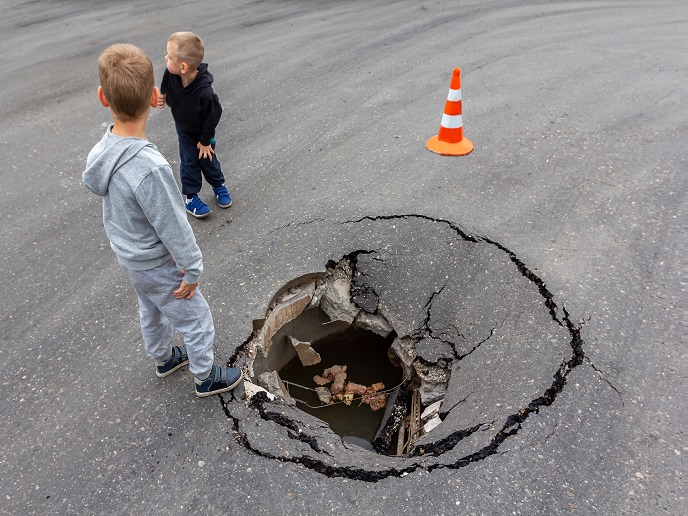How does self-healing concrete work?
EU policies are increasingly geared towards a more circular economy, driven by more sustainable materials, technologies, practices and behaviour. Efforts to decrease needless waste often cite the ‘five Rs’ – refuse, reduce, reuse (or repair), repurpose and recycle – as a means to achieve this. Currently, fixing damage or deterioration to physical infrastructure, such as roads or buildings, means replacing the original construction materials. This not only is often financially and environmentally costly, but can also compromise structural integrity and aesthetics.
Is there a greener alternative?
According to Harbottle: “Evolution has given plants and animals a myriad of ways to heal themselves when injured. We can learn a lot from nature when designing our built environment.” For example, when we break bones, soon afterwards blood vessels around the fracture constrict and form a clot to stop further bleeding. Soft fibrous tissue and cartilage then start forming bone-like material called callus. New bone cells then develop on either side of the fracture growing together and absorbing the callus to create new bone. Working at Cardiff University(opens in new window) in the United Kingdom, Harbottle has been involved in a series of initiatives to develop construction materials that harness biological processes to preserve existing infrastructure, reducing maintenance and new construction. In the GEOHEAL project, funded by the Marie Skłodowska-Curie Actions programme(opens in new window), Harbottle tapped the ability of bacteria to mineralise calcite which can then ‘repair’ natural materials like the limestone and sandstone often used in construction. The hardy bacterium used, Sporosarcina ureae(opens in new window), is seeded as spores alongside their required nutrients. As they grow, the bacteria produce calcium carbonate(opens in new window) which hardens into calcite crystals that can bind with limestone and glue sandstone grains together. “Being porous, masonry can host a range of active microorganisms, so this treatment could be applied by sprays, paints or capsules inserted into pores, repairing the material while retaining its ability to ‘breathe’,” explains Harbottle. Harbottle also discovered that the bacteria could offer a cyclic solution. When dormant bacteria are mixed into mortar paste, they can be continually reanimated when cracks appear in the mortar.
As good as new?
“The bacteria create a kind of scar tissue. Exactly how close this comes to regeneration, depends on the material,” says Harbottle. “As limestone has plenty of calcium and carbonate available, it’s likely that some of the newly formed calcite contains minerals from the original material ‘rearranged’ by the bacteria.” According to Harbottle, the resulting fix is probably very similar to the original material, regaining its properties, such as strength and weather resilience. As Harbottle points out, self-healing as a concept has been widely applied to other materials, including polymers(opens in new window) and asphalt(opens in new window), as well as concrete. “I believe it’s also been investigated in metals but this wouldn’t involve bacteria, which is most appropriate in construction materials as these involve mineral-producing processes,” Harbottle adds. While Harbottle didn’t want to stray too far from his own area of expertise, he did allow a peek into the potential future of smart building materials. “Before an organism can self-heal, it first has to know that it is injured. So recent work in the United Kingdom has explored sensing and actuation systems – giving materials the ability to detect deterioration, analyse options and then decide what to do, without human intervention,” he expands. “In the future, it could be possible to develop entirely autonomous self-repairing systems, but they would have to harvest the chemicals and energy necessary to produce a repairing agent from their surrounding environment.”
So when will our high street be self-repairing?
Currently Harbottle’s bacterial-driven solution faces a number of challenges. One is supply – Harbottle’s bacteria were sourced from his lab, but for mainstream use, indigenous bacteria would have to be sourced in large quantities, and would have to be trialled before use. Another limitation is demand. The construction industry is rightly conservative when it comes to new materials, given the potentially devastating implications of failure. As Harbottle points out, there are not only safety risks but also aesthetic risks for heritage restorations. “We need to build up – pun intended – evidence across a range of structures to win the confidence of potential users. Probably first prioritising non safety-critical environments or non-structural, cosmetic elements such as paving or facades,” adds Harbottle. Click here to find out more about Harbottle’s research: Bioengineered ‘self-healing’ for sustainable building and smart heritage preservation



